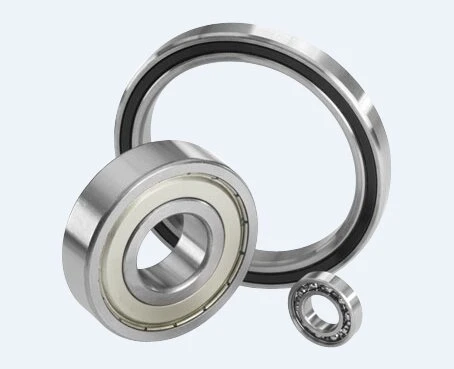
ديسمبر . 15, 2024 13:58 Back to list
four types of roller bearings
Understanding the Four Types of Roller Bearings
Roller bearings are essential components in various mechanical systems, providing support for rotating elements and minimizing friction. They consist of inner and outer rings, a cage, and rolling elements, usually shaped as cylinders or spherical segments. Among the different types of roller bearings, four notable types stand out due to their wide applications and unique characteristics cylindrical roller bearings, spherical roller bearings, tapered roller bearings, and needle roller bearings. In this article, we will explore each type's features, applications, and advantages.
1. Cylindrical Roller Bearings
Cylindrical roller bearings are designed to handle high radial loads and are particularly effective in applications where heavy loads are present. The rolling elements in this type of bearing are cylindrical, allowing for a large contact area between the rollers and the raceway. This design enables the bearing to accommodate higher speeds and loads compared to other bearing types.
Cylindrical roller bearings come in various configurations, including single-row, double-row, and multi-row designs, each suited for specific applications. They are commonly used in electric motors, gearboxes, and industrial machinery due to their robustness and reliability. The absence of thrust capabilities in the single-row version makes it more suitable for applications primarily subjected to radial loads.
Spherical roller bearings are designed to support both radial and axial loads, making them ideal for applications where misalignment might occur or where axial loads are present. They consist of two rows of asymmetrical spherical rollers that can pivot within the inner and outer rings, allowing for self-alignment. This feature is particularly advantageous in applications with shaft deflection or mounting errors.
These bearings are widely used in large machinery, such as wind turbines, construction equipment, and gearboxes, where both load capacity and alignment tolerance are critical. Their ability to cope with misalignment extends the life of the bearing, reducing wear and maintenance needs.
four types of roller bearings

3. Tapered Roller Bearings
Tapered roller bearings are designed to accommodate both radial and axial loads, offering versatility in their application. They have tapered rollers positioned between a tapered inner ring and a tapered outer ring. This unique geometry allows for high load-carrying capacity and effective distribution of forces within the bearing.
Tapered roller bearings are commonly found in automotive applications, such as wheel hubs and transmissions, where they manage the high forces generated during operation. They excel in handling dynamic loads, making them suitable for both heavy and light-duty applications. Additionally, they can be adjusted during installation, allowing for customization of internal clearance to optimize performance.
4. Needle Roller Bearings
Needle roller bearings feature long, thin cylindrical rollers, resembling needles, which provide a high load-carrying capacity in a compact design. These bearings are particularly advantageous in applications where space is limited, yet high performance is necessary. The small size of the rollers allows for a larger number of rolling elements within the same space, enhancing the bearing's load distribution capabilities.
Due to their compact nature, needle roller bearings are commonly used in automotive transmissions, appliances, and small machinery. They are especially well-suited for applications with limited radial space but requiring an efficient load-bearing solution.
Conclusion
Understanding the four types of roller bearings—cylindrical, spherical, tapered, and needle roller bearings—provides valuable insight into their respective functionalities and applications. Each type of roller bearing is engineered to meet specific performance needs, making them essential in a wide array of mechanical systems. Selecting the appropriate bearing type is crucial for optimizing performance, ensuring longevity, and minimizing maintenance requirements in various industrial and automotive applications. Whether it's for heavy-duty machinery or compact mechanisms, roller bearings play a pivotal role in modern engineering and manufacturing.
Latest news
-
Common Failures in Thrust Ball Bearings and Solutions
NewsAug.22,2025
-
How Tapered Roller Bearings Can Take Shock Loads
NewsAug.22,2025
-
Angular Bearings in High-Precision Spindles
NewsAug.22,2025
-
The Impact of Misalignment on Cylindrical Roller Bearing Performance
NewsAug.22,2025
-
The Role of Cage Design in Deep Groove Ball Bearing Durability
NewsAug.22,2025
-
The Impact of Material Quality on Machinery Bearings’ Lifespan
NewsAug.22,2025
